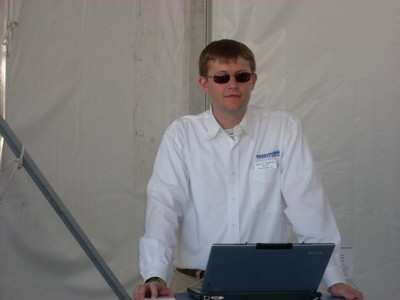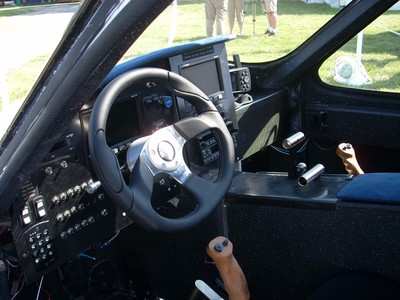Engineers From MIT Working On 21st Century Version Of 1960s
"Aero Car"
In the true spirit of innovation, this week a group of
award-winning MIT Aeronautical Engineers introduced a proof of
concept version of what they prefer to call a "roadable aircraft"
they hope will expand the general aviation market and bring more
flexibility to flying.

The Terrafugia management team credits the creation of the Light
Sport category of aircraft as the catalyst to being able to develop
a buildable and marketable LSA, capable of both flying and
driving.
Unlike other historic attempts at developing a "flying car", the
Transition's transformation from aircraft to car is fully automated
and takes an estimated 15 seconds to fold the wings and reconfigure
from an aircraft to a car. The company has a US patent pending on
the folding wing technology, and from a business perspective, sees
many of the technological achievements as alternative revenue
sources to fund company growth and financial stability.

Terrafugia President Dr. Carl Dietrich shared with reporters
Monday what MIT scientists believe are fundamental obstacles to
increasing the General Aviation (GA) market and the benefits that a
roadable aircraft has in response. The first obstacle presented is
weather. The Transition would allow the LSA pilot to use the road
configuration during IFR conditions. Dietrich says this improves
safety, by providing an alternative option to "pushing it" in
marginal VFR.
Another obstacle Dietrich (shown below) cited is cost. The
Transition is spec'd with a 20 gallon tank designed to achieve 4-5
gallons per hour fuel economy in flight configuration. It can be
powered with either super-unleaded gasoline or 100LL, and most
notably would not require a hangar or tie-down space at an airport.
The Transition could be driven home and parked in the garage.

The third issue mentioned was mobility once arriving at an
airport. The theory is the remote nature of most GA airports
presents some inconvenience and the ability to drive to an off
airport destination would appeal to many GA aircraft users.
The interior cabin is equipped with two seats and has both a
fixed wheel, for driving, and a left handed stick typical in most
LSAs. The stick can be mounted to the floor in driving
configuration. The Transition is carbon fiber construction powered
by a Rotax 112S. Based on an estimated empty weight of 890 lbs, the
aircraft would have an approximately payload of 430 pounds with a
range of 400 nm and a cruise speed of 100 kts.

In addition to FAA certification, the Transition must also pass
roadway safety standards mandated by the National Highway
Transportation and Safety Administration (NHTSA), explained Gregor
Cadman, one of Terrafugia's engineers. "The Transition will include
things like airbags, safety glass, and a must undergo a crash test"
said Cadman. "FAA is used to looking at new aircraft concepts; we
can't say the same for NHTSA. They're used to talking with the
likes of Ford and GM. These features do add some weight."
The design has been extensively tested in simulation and the MIT
wind-tunnel. The proof of concept aircraft will undergo further
refinement in the Boston area and is projected by Terrafugia to be
road tested in the Fall 2008 and take its first flight Late 2008.
If all goes as planned, the first delivery would occur as early as
Late 2009.
They anticipate the purchase price to be in the range of
$194,000 and are accepting deposits of $10,000.
 Airborne-NextGen 11.04.25: Anduril YFQ-44A, Merlin SOI 2, UAV Rulemaking Stalled
Airborne-NextGen 11.04.25: Anduril YFQ-44A, Merlin SOI 2, UAV Rulemaking Stalled NTSB Prelim: Elmore Travis C Searey
NTSB Prelim: Elmore Travis C Searey ANN's Daily Aero-Linx (11.03.25)
ANN's Daily Aero-Linx (11.03.25) ANN's Daily Aero-Term (11.03.25): On-Course Indication
ANN's Daily Aero-Term (11.03.25): On-Course Indication Aero-News: Quote of the Day (11.03.25)
Aero-News: Quote of the Day (11.03.25)






